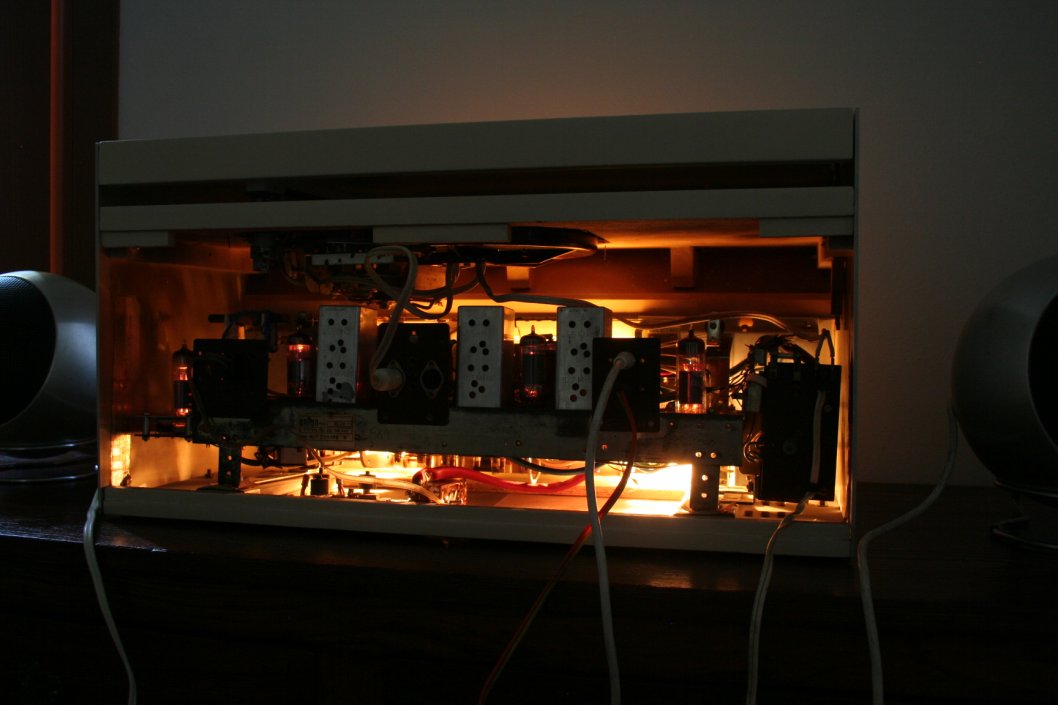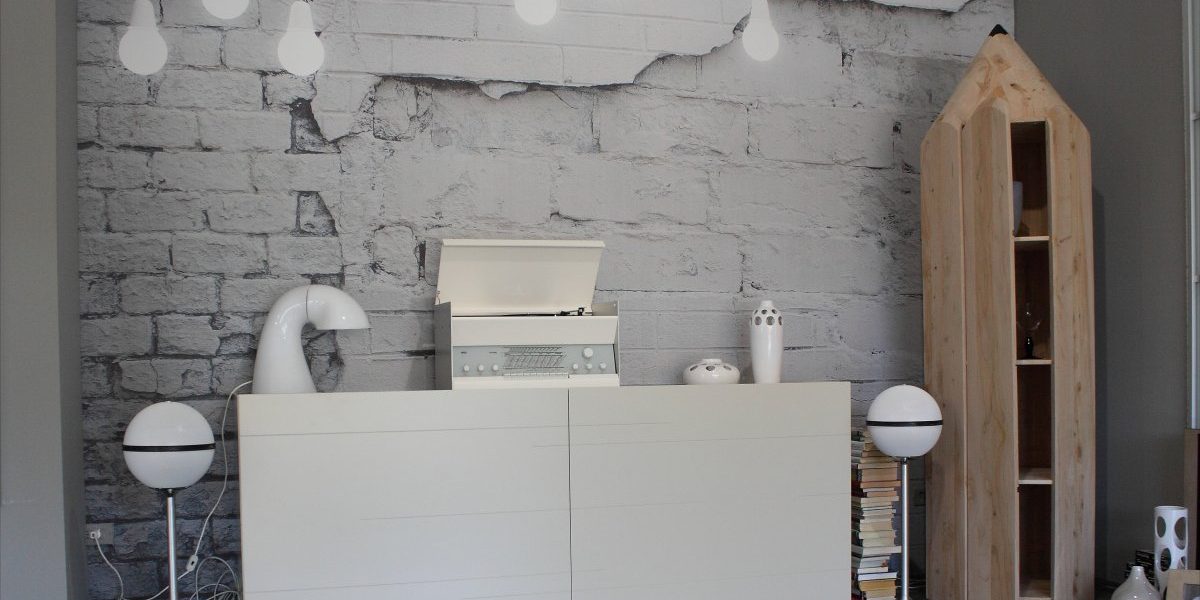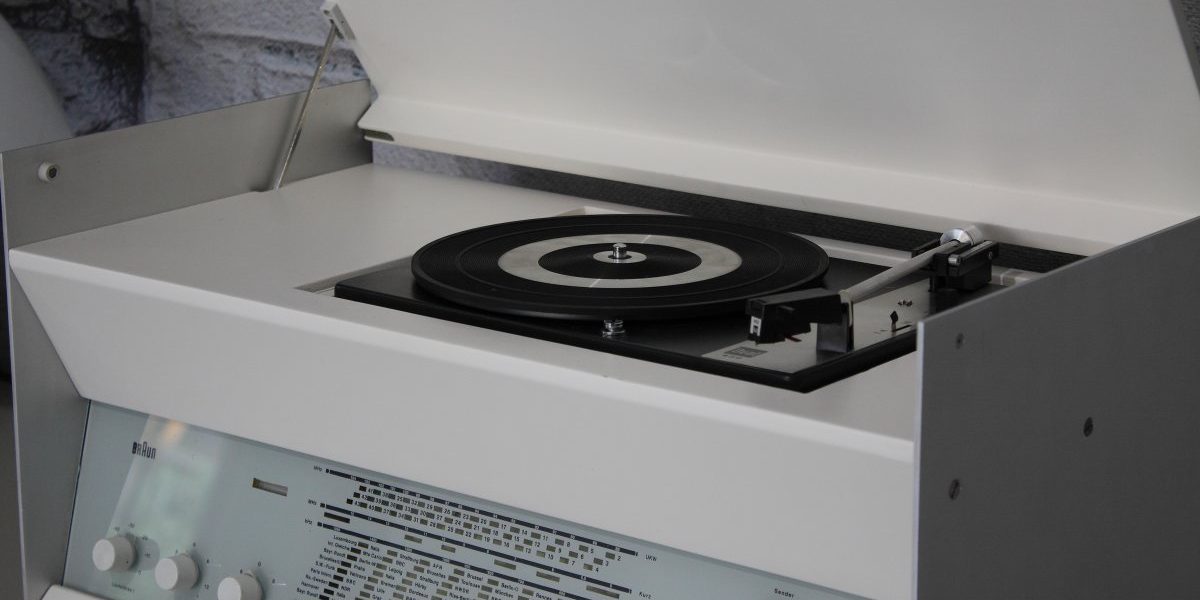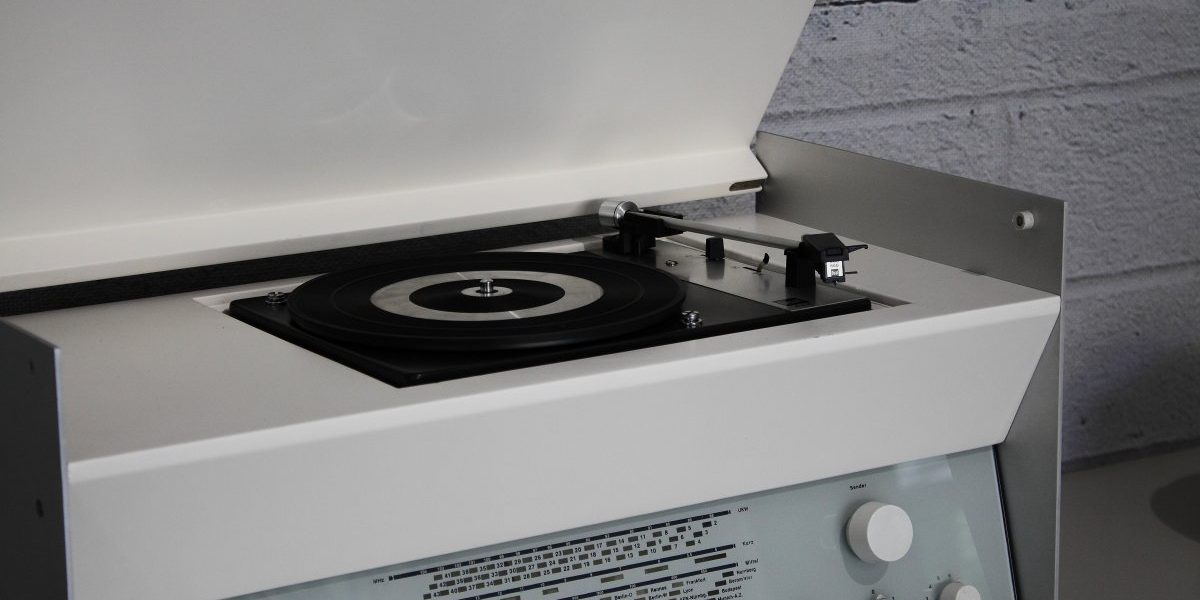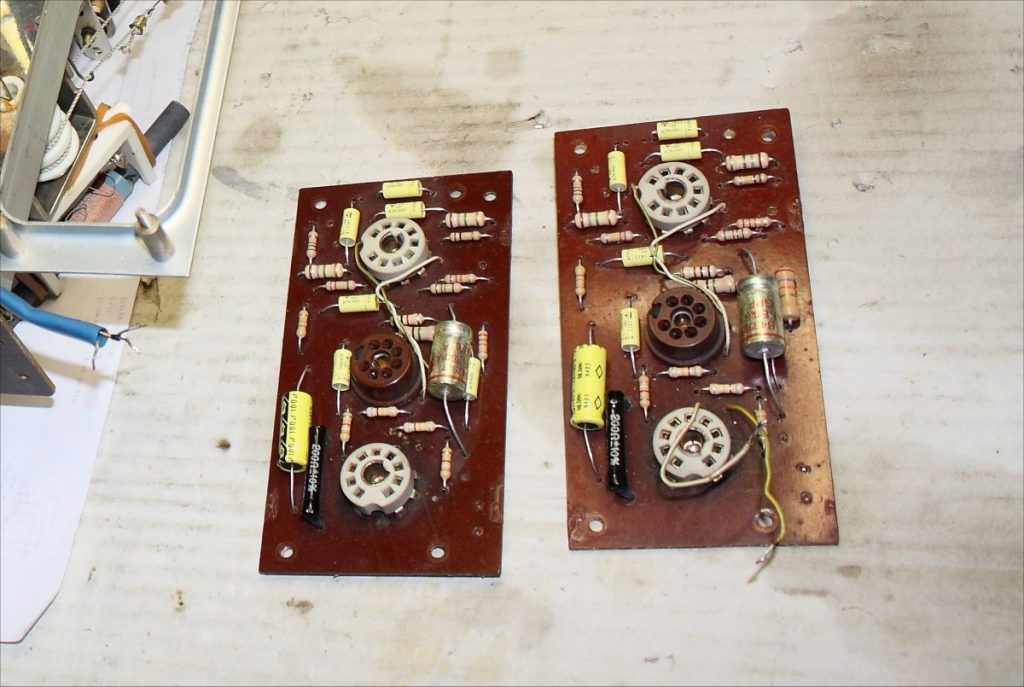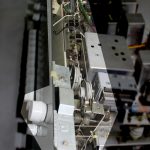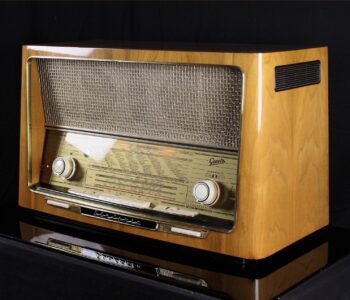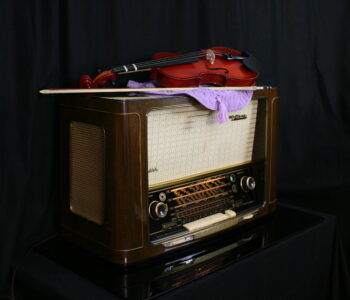 braun - en
braun - en
Braun Atelier 3 Enhanced – en
- 15th February 201727th February 2019
- by giovanni
Braun Atelier 3 Enhanced
Braun Atelier 3 Enhanced
The best Tube receiver built by BRAUN
This is a really special review. In fact, the device under test is not only one of the best tube stereo receivers built in Germany in the 60's. Not only is the device that has a shocking design, modern and rational than the other equipment of the time. But this device it has been improved by us in its essential points. The result is spectacular.
But let's start from the beginning. The receiver section represents the utmost of Braun tube production. It belongs to the class of biggest German receivers such as Telefunken Opus 2550, Nordmende 3004, Graetz Stereo Unit 250, the Saba Studio I etc.
Main feauture of this device is the simplification of electric circuits (today is pretty self-explanatory, but in 1961 it was considered a remarkable feature). Differently from other devices the Braun’s Negative Feedback is reduced to a single resistance (highlighted in red) aiming at a low distorsion and an excellent musical transparency.
The sounds control circuit is canonical: a very efficient and balanced Baxandall circuit (highlighted in yellow). It allows the sound control without changing the signal’s phase according to potentiometers.
The Loudness circuit (highlighted in green) is extremely simple and studies for a correct emphasis of low frequencies. Sound quality is as good as Telefunken’s, Nordmende’s, grundig's and Graetz’s of the same level, more refinement maybe.. You will definitely need high-efficiency loudspeakers. This enhanced device is valuable for its breathtaking design and for its performance both.

FM FREQUENCY RANGE
FM frequency range widened from 88 up to 108 MHzMORE SUITABLE TURNTABLE
New vintage turntable with anti-skating and cartridge weight regulationIMPROVED AMPLIFIERS
Amplifiers with new noiseless capacitors and resistorsSTEREO DECODER
Ultra noiseless MPX decoder embedBLUETOOTH
Bluetooth receiver embedTUBESOUND IMPROVEMENT
- FM frequency range widened from to 88 up to 104 MHz - The tube radios produced in Germany in the years 50/60 are famous worldwide for their excellent sound quality, the beauty of their furniture, their strength and for their construction standards without compromise. Unfortunately the FM band extending from 87.5 to 100 MHz for which are scarcely usable in most cases. After careful study and a lot of tests we were able to obtain a frequency range by some units from 88 to 104 MHz. We have also reconstructed a display exactly identical to the original, made with the same materials and the same techniques, but with the new frequency range. The result is perfect. An original device, but with the ability to listen most stations in any country.
- New vintage turntable with anti-skating and cartridge weight regulation - The turntable originally installed on this beautiful machine is really inadequate. In 1962 you could find much better. But for reasons of space, aesthetics, and I think, also economics, it was installed a BRAUN PC4 model.
The new turntable mounted was produced by Dual and is a very particular model. It has a series of characteristics that have allowed, and made affordable, transplantation.
Compatibility Features:
- Only a few years newer than the Braun
- Quite similar in size to the original turntable.
- Piezo cartridge. So it works perfectly with the Braun preamplifier stage
Improvement features:
- Cartridge weight adjustment
- Antiskating adjustment
It 'been necessary a significant top panel adjustment work, but the result is perfect. It seems born that way.
- Improved amplifier - New high quality Metal Film resistors take a place of the noisy old carbon composite resistors. The old capacitors are completely renewed with very low parasitic losses (ESR). Great attention in the direction of assembly of the components has been used. All the improvements are substantial.
- Ultra noiseless MPX decoder - A MPX decoder was introduced between RF and BF stages. Usually it lack. It's a decoder developed specifically for this unit by a German engineer I work with. The noise level introduced is very low. Crosstalk is perfectly calibrated. With correct receiving conditions the result is an accurate reconstruction of the sound stage.
- Bluetooth receiver embed - The unit is equipped with a BLUETOOTH receiver powered directly by the receiver power supply. This makes it possible to control the amplifier from any external digital device as an IPAD, a Smartphone, or a sophisticated multimedia station. So you can hear your preferred web station or your lossesless file without cables on the room. Wireless Receiver can be equipped upon requests.

Dieter Rams installing the 'The New Electronics' pavilion for the show "Designing Modern Life" held within the Design Museum in London.

Design Museum of London
Short bibliograpy
- Walter Gropius, The new architecture and the Bauhaus, Cambridge, M.I.T. Press, 1968, ©1965.
- Gropius - Marston Fitch, Walter Gropius, New York, G. Braziller, (The masters of world architecture series), 1960.
- Magdalena Droste; Angelika Taschen, Bauhaus 1919 - 1933, Ko?ln Taschen 2002,
- Reissinger; Robinson; Siebenbrodt, Bauhaus Weimar - designs for the future, Ostfildern-Ruit : Hatje Cantz Publishers, 2000.
- Jaeggi-Schwaiger, Fagus: industrial culture from Werkbund to Bauhaus, New York , Princeton Architectural Press, 2000.
- Hans-Joachim Braun, The German economy in the twentieth century (The German Reich and the Federal Republic), Routledge, New York 1990.
- Jonathan M Woodham, Twentieth century design, Oxford University Press, Oxford 1997.
- Nigel Whiteley, Design for society, London, Reaktion Books, 1998.
Web:
- http://www.bauhaus.de/
- http://designmuseum.org/design/dieter-rams
- http://gizmodo.com/5411868/dieter-rams-gallery/gallery/10
- http://www.formguide.de/en/designers/overview/peter-keler/
BAUHAUS AND 60's
The 1961 is one of those "crossroads" years of the History of Twentieth Century. That year's events will leave a deep mark - for better or for worse - in Europe. The international context has deeply changed form the post-war years. The Nations that allied to defeat the Nazi Germany are by now opposed militarily and ideologically. From the beginning of the year the Cold War influences the whole World. The threat of a new Global War appears at this point inevitable, and the assumptions are all there. In this gloomy climate, a series of crucial events for mankind comes in succession.
In Germany, in particular, 1961 is recalled as "The year of the wall". In few days the Authorities of the German Democratic Republic ordered the construction of a double layered wall and an armed surveillance system to divide East Berlin form the western sectors. Berlin Wall becomes the symbol of a contrast between East and West that gradually involves the whole World, shortly afterwords bringing it to the brink of a nuclear catastrophe with the Cuban crisis two years later.
The contrasting two superpowers involves all sectors of the economic and political life. Scientific research paves the way to the conquest of Space, opening another contest front between USA and USSR to reach the Space. On April 12th, 1961 Yuri Gagarin with the Vostok 1 is the first human being to travel into Space and orbit around the Earth. the United States of America have to acknowledge the huge leap ahead of the technological development of Soviet Union.
It's the intellectuals turn to build bridges between the counter posed parts. 1961 is sure enough an extraordinary year also for Culture: Ivo Andric is awarded the Nobel Prize in Literature; the debate between Positivism and Dialectical materialism divides the Frankfurt School. Karl Popper and Theodor Adorno discuss on the Scientific Research Methodology and give birth to the "Positivismusstreit", namely the clash between Positivism and Dialectical materialism that will influence the future Epistemological debate. The philosophical debate is as such originated by the different ideological visions of Marxism and Positivism. Hemingway commits suicide and Primo Levi writes "La tregua/The Truce", an account of a return to the world of the Living after the hell of Lagers.
The 1961 is moreover the Economic Boom year and the re-construction of the Europe that had been destroyed during the Second World War -that went on during the '50s - forms the paving ground of an unprecedented economic growth period. The welfare society arises, and Germany is in the front line.
German culture rediscovers Weimar. and the representatives of the artistic and theatrical avantgarde, such as Brecht. Walter Gropius, founder in 1919 of the revolutionary tendency of Bauhaus Architecture, establishes in Darmstad the Bauhaus Archive. The Bauhaus, created in 1919, and permanently snapped off with the coming to power of Hitler, is rediscovered in the early '60s by the new generation grown in the harsh postwar period. The rediscovering of the essential lines of the concept of the great German architect is, for the architects of the '60s an Epiphany. The hose and the furniture become the final product of a mental, planning and practical process that combines together technique, ergonomics, simplicity in an totally innovative stylistic merger.
New building techniques concepts enter into the big firms trough by hiring designers, new profession that starts influencing the production lines. With thins new approach the product-objects that are sold are to be seen in a “total” product vision, that is a synthesis of technique and concept.The modern idea of Design as we currently mean it is born.
Braun is one of the first Firms that decides to invest in Design. The best designer was Dieter Rams, who was on apprentice with Otto Apel (Apel was for ten years the assistant of Albert Speer, Hitler's architect, and following that became the Ministry for Armaments and War Production of the Reich. After the war he was hired by the Americans to modernize the construction industry techniques in the USA). Rams started a stylistic research work that brought him to develop the concept of “ergonomic essentiality”, summarized in his aphorism "Weniger, aber besser", that is “Less, but better” or in a wider sense “Less, as long as better”.The influences of the Bauhaus are clear in his works, particularly Peter Keler works, from which he took the concepts of “spatiality” and “linearity” of works as "Wiege (Cradle)", 1922 translating the into simple and elegant lines.

Dieter Rams at Vitsœ - Paris
Dieter Rams’ 10 principles of good design
Good Design is Innovative - The possibilities for innovation are not, by any means, exhausted.
Good Design Makes a Product Useful - A product is bought to be used. Good design emphasises the usefulness of a product.
Good Design is Aesthetic - The aesthetic quality of a product is integral to its usefulness because products are used every day and have an effect on people and their well-being.
Good Design Makes a Product Understandable - It clarifies the product’s structure.
Good Design is Unobtrusive Products - fulfilling a purpose are like tools. They are neither decorative objects nor works of art.
Good Design is Honest - It does not make a product more innovative, powerful or valuable than it really is. It does not attempt to manipulate the consumer with promises that cannot be kept.
Good Design is Long-lasting - It avoids being fashionable and therefore never appears antiquated.
Good Design Is Thorough Down to the Last Detail - Nothing must be arbitrary or left to chance. Care and accuracy in the design process show respect towards the consumer.
Good Design is Environmentally Friendly - Design makes an important contribution to the preservation of the environment.
Good Design is as Little Design as Possible - Less, but better. Back to purity, back to simplicity.
MAIN FEATURES
Year of production: 1961/65
Superheterodyne IF 455/10700
8 AM Circuits 12 FM Circuits
Wavebands: LW, MW, SW, FM
Operating voltage (CA) 110; 125; 160; 220 Volts
Dimensions (LHD): 562 x 195 x 280 mm / 22.1 x 7.7 x 11 inch
Net weight: 13 kg / 28 lb 10.1 oz (28.634 lb)
11 Tubes: ECC85 ECH81 EF89 EBF89 EM84 ECC83 ECC83 EC92 EC92 ELL80 ELL80
Rotating ferrite aerial for AM bands
TONE CONTROL
The tone control system use Baxandall circuits as described in the initial comments.
The network is logarithmic and also potentiometers, as in the original Baxandall project.
With this circuit the improved symmetry of response curves is worth it.
AERIALS
Inside the cabinet there is a dipole for FM reception and a ferrite rotating aerial for AM reception.
Ferrite aerial can be rotated from the outside to achieve a perfect tuning of the device in the AM.
In this picture see the rotation mechanism and the position indicator of the aerial.
The reception sensitivity with internal aerials is very good. This unit was in fact produced in a period when there were not many radio stations and those available fairly apart from each others.
Using an external aerial sensitivity is further increased.

SEPARATE CONTROL TUNING BETWEEN AM AND FM
The tuning system is another gem.
The unit is equipped with mechanisms for keeping separate the AM and FM bands.
The tuning knob is single but a selector switch commutes into cable systems (all in steel) and pulleys separated depending on the band.
The movement is transferred to both mechanisms with a system of pulleys and separated gears.
TUNING INDICATOR
The magic eye has of course been replaced.

The volume control is on the left (with built-in loudness) and axially.
The next control you meet on the left is the Treble. Then you can see the Bass control knob.
Above you see the Magic Eye (Tuning Indicator)
On the left you meet the band spread dial with the FM, Short, Medium, and Long Wave bands.
Below you see the control buttons. Respectively: Off, Voice, AFC, Stereo/Mono, Turntable, LW, Internal AM Antenna, MW, SW, FM.
On the right the big tuning knob.
Below you see the Volume Control II (Deactivated), the Balance control and the ferrite aerial orientation knob.
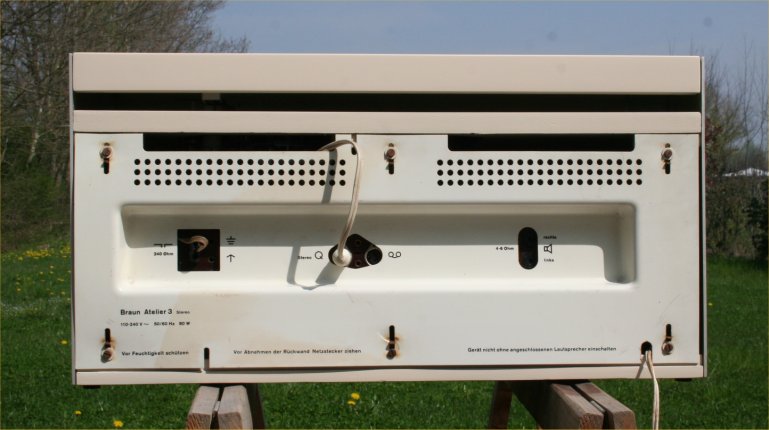
REAR SIDE
AM and FM antenna inputs and ground socket.
Output for external speakers.
Socket for recorder (tonbandgerat).
Turntable input (Tonabnehmer)
RESTORATION STEPS
 Output Power Board before restoration
Output Power Board before restoration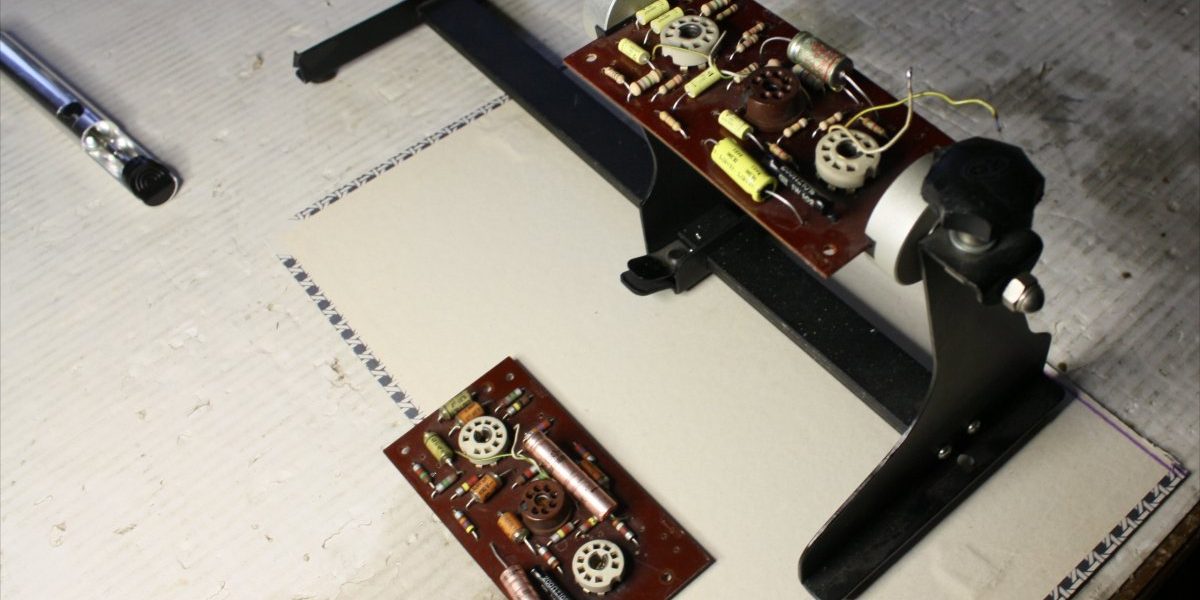 Before and after
Before and after Both the boards restored
Both the boards restored The MPX decoder
The MPX decoder The underside
The underside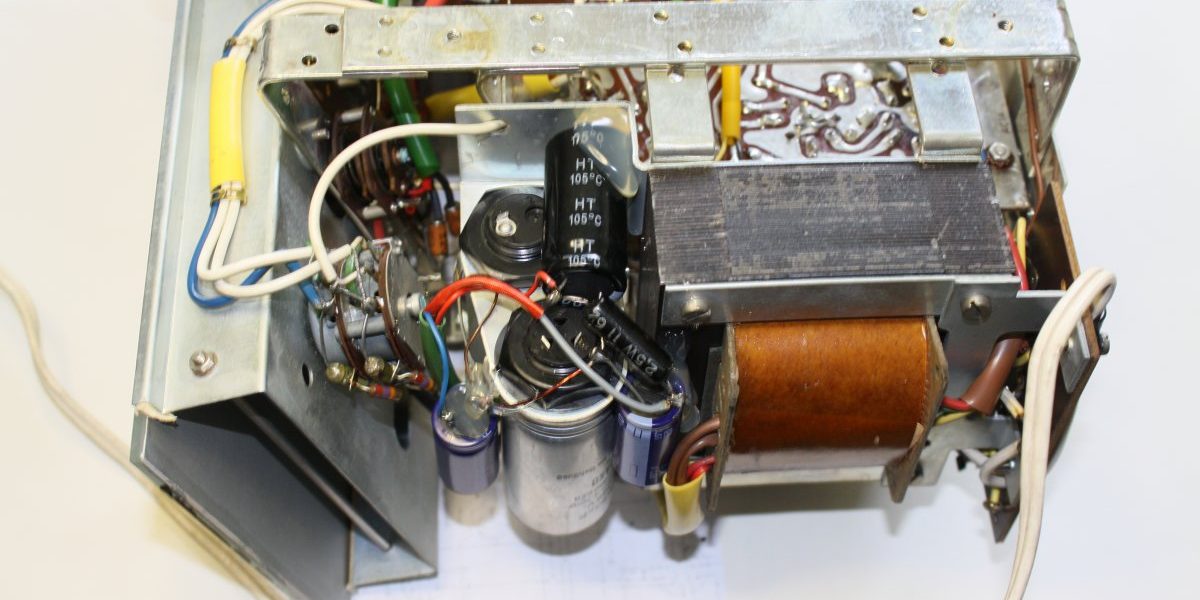 The power suppy with new rectifier and capacitors
The power suppy with new rectifier and capacitors Matched power tubes NOS
Matched power tubes NOS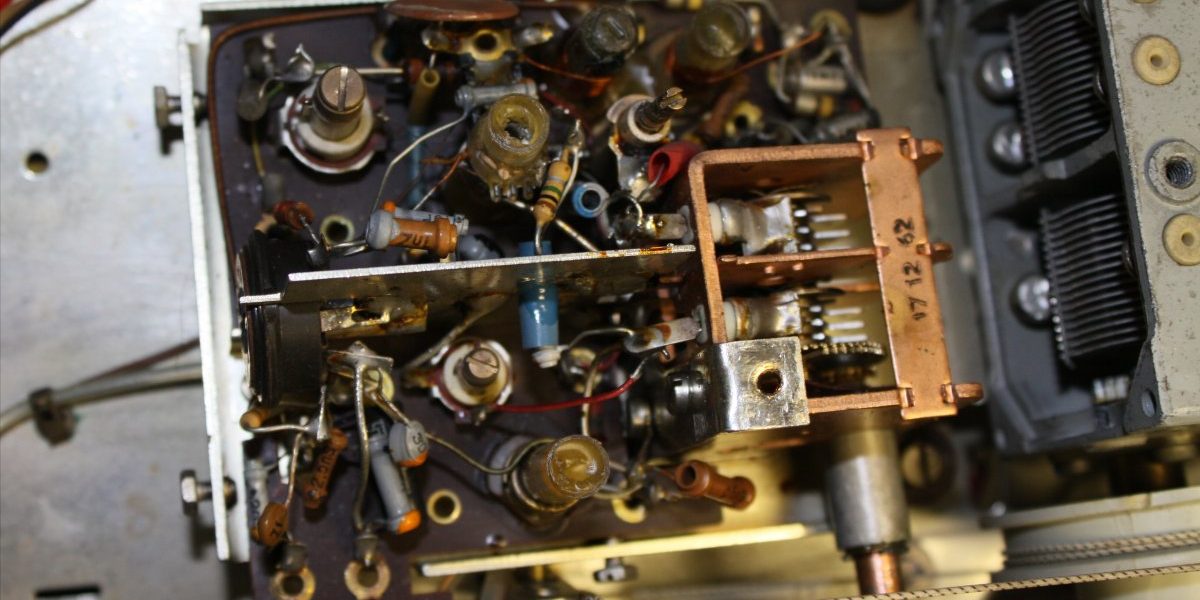 The FM oscillator modified to reach 104 MHz
The FM oscillator modified to reach 104 MHz The calibration of the FM converter
The calibration of the FM converter The tuning of the Medium Frequency Transformers
The tuning of the Medium Frequency Transformers Close the oscilloscope
Close the oscilloscope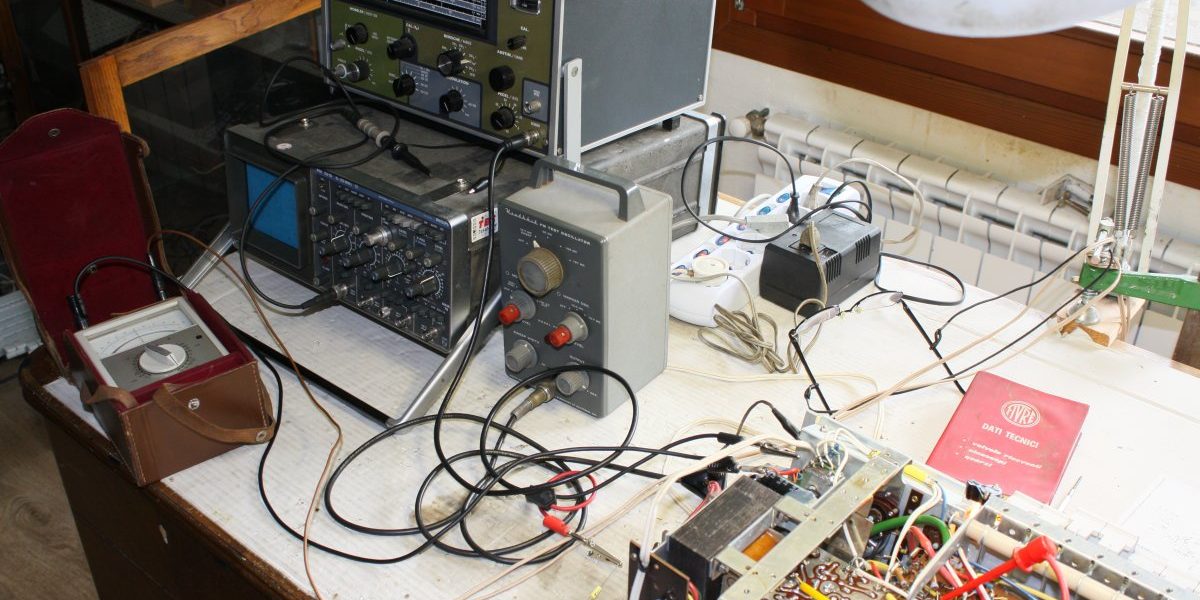 FM detector tuning
FM detector tuning Perfect! At 10,7 MHz the current is Zero in the detector
Perfect! At 10,7 MHz the current is Zero in the detector And this is the correct ratio curve
And this is the correct ratio curve Now the Braun NAKED is playing
Now the Braun NAKED is playing The modified wood case before the reassembling
The modified wood case before the reassembling Close the wood case
Close the wood case More close, to see the perfection
More close, to see the perfection New turntable assembling
New turntable assembling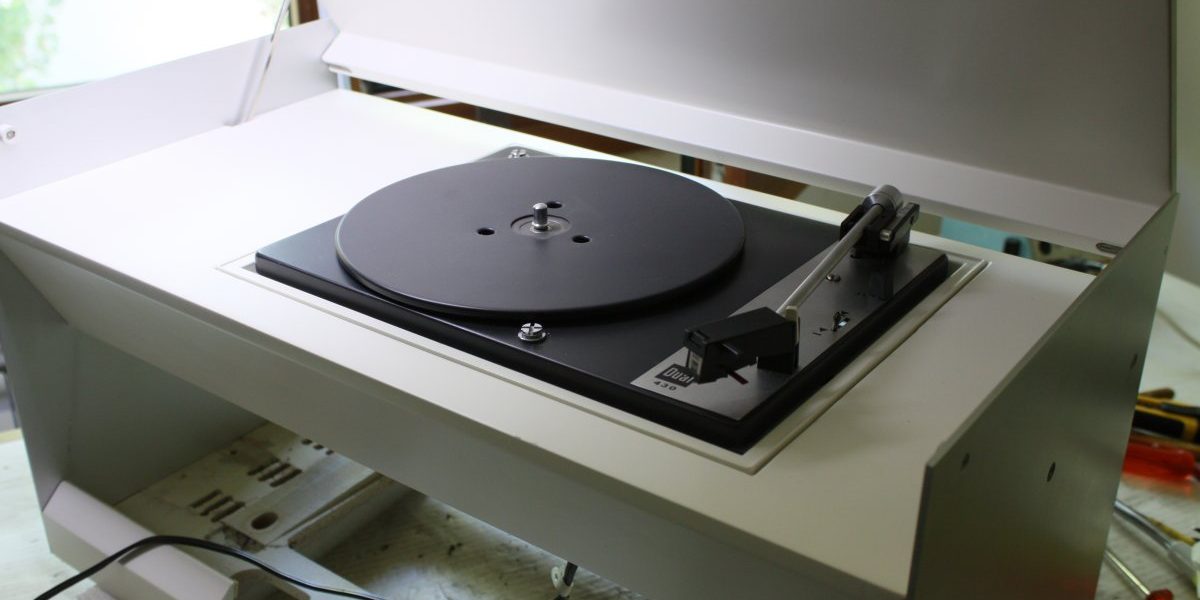 New turntable almost ready
New turntable almost ready Turntable first test
Turntable first test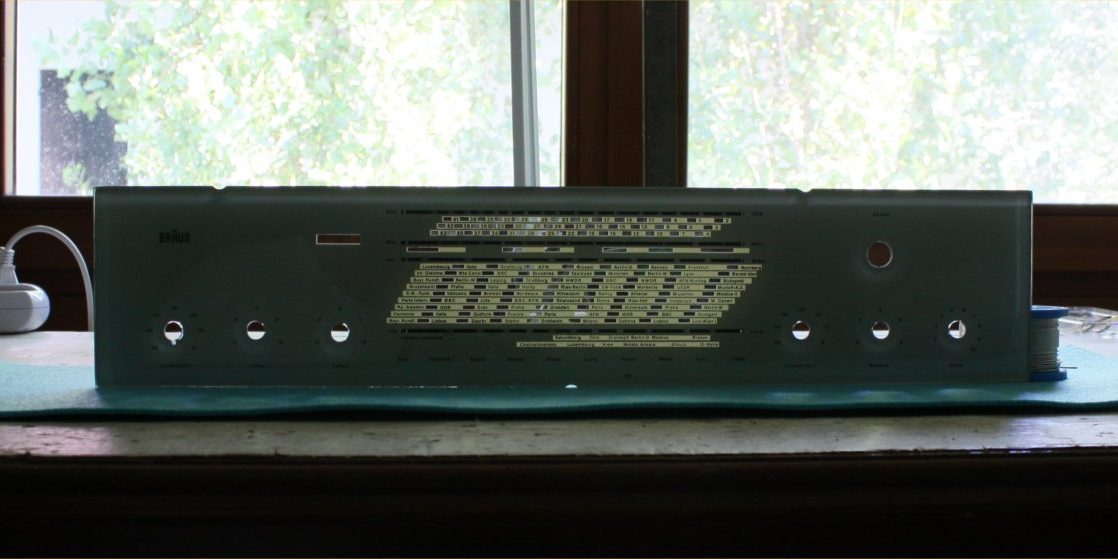 New Dialglass. You can see the different transparency zones as the original
New Dialglass. You can see the different transparency zones as the original
THE USUAL AMAZING LAST IMAGE
